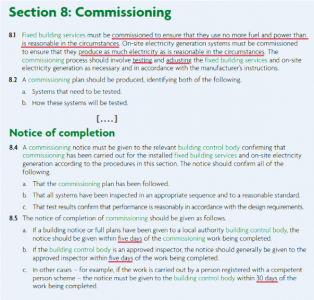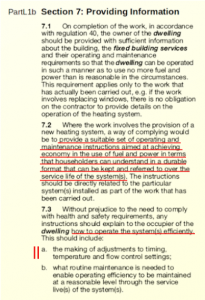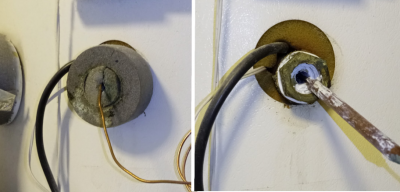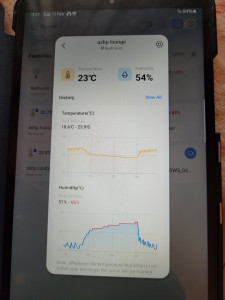Controversial opinions - pure weather compensation, buffer tank, heat loss, oversized heat pumps
@ajbevster Okay, I think I understand now, but might not have it all correct.
The Glenhill has its own internal 70l buffer and 300l cylinder and they do one for HP.
The HP heats both the buffer and the cylinder via a three way valve and CH is taken from the buffer.
So the flow now depends on which system is being feed at the time - CH or DHW ?
If the figures are for the DHW, then that would mean you have plenty(ish) hot water. Indications are it should only take about 30mins to heat up the water (needs testing). Any more than this and system will cycle. It may be the HP can keep the cylinder always topped up (ie drops 5°, heat up, repeat), but it may be better to just heat up for 30 mins twice a day.
If the HP is feeding the buffer and therefore the CH, it may be the CH side that's causing the problem, as its not taking heat away from the buffer quickly etc.
Apart from the naff electrical tape, what is it about this thermostat which you believe is 'incorrect' @ajbevster
Is it still picking up a portion of 'room temperature' rather than the internal water temperature?
Is it inserted in the copper pocket tube without any heat transfer compound around it?
Personally I'd be quibbling over the totally un-insulated pipe below it.
But since your HP is over-sized, I guess you're not too worried about spilling heat!
Save energy... recycle electrons!
Posted by: @ajbevster@jamespa how else can I increase my delta t? When I reduce flow rate (condenser pump speed) the delta t increases to around 5c.
Why do you want to increase your deltaT?
4kW peak of solar PV since 2011; EV and a 1930s house which has been partially renovated to improve its efficiency. 7kW Vaillant heat pump.
Posted by: @sunandairPosted by: @jamespaPosted by: @sunandairThis debate has been brewing for quite a few weeks now. It certainly asks some questions of the standards of the industry.
So is the designer/installer charged with the responsibility for achieving the most economic operation? If not why not? And is low and slow catchphrase the essential purpose of every installation? Who is protecting the homeowner?
If radiators are under sized or HPs are over sized for operation at a specified low flow (say 32c) shouldn’t this be automatically failed as an installation.
Perhaps we have just turned a corner?
I think the answer to this is because we, as consumers, arent prepared to pay for installers to revisit properties multiple times to optimise the set ups, which is what is necessary (in the absence of tweaking by the consumer) to optimise installations. Until we have auto adjusting LSVs linked to the heat pump (as Adia are developing) we are stuck with manual adjustment over several days/weeks, which no installer will do.
Im not saying that there arent cowboy installations, there clearly are, but I think we have to be realistic about what to expect in terms of getting the absolute best out of a system.
not sure I agree… most of the sizing issues can be done at the design stage as a calc exercise. And as you and I have discussed previously… the design stage tends to focus on max output at -3 where there is not a cycling issue. The problem of size and volume occurs at low flow temps and min outputs. Yet that is also where heat pumps can be at their most efficient.
the infrastructure of the installation needs to be right at the design stage. That would then allow the tweaking and fine adjustments post-installation doesn’t that make sense?
I do agree entirely that there is an oversizing problem, that design for the midrange operation is important, and that this needs to be fixed.
There is also still a massive problem with the unnecessary and efficiency-compromising installation of low loss headers, buffer tanks and occasionally plate heat exchangers for 'hydronic separation' That also needs to be fixed (personally I think its close to needing a ban!)
However that wont solve the problem that, however 'good' the designer, radiator and indeed heat pump sizing is an approximation. This means that, inevitably, the radiators will need to be balanced (for room temperature not for flow/deltaT) and the weather compensation parameters for optimum efficiency will need to be adjusted experimentally in the field. You cant do either of these is a day, much less the couple of hours (if that) which an installer will allocate to this after an exhausting week. So inevitably (at present) this falls to the homeowner. Until we have significantly more sophisticated controls specifically designed to solve this installation problem, this part of the problem isnt going to be fixed so far as I can see.
4kW peak of solar PV since 2011; EV and a 1930s house which has been partially renovated to improve its efficiency. 7kW Vaillant heat pump.
Posted by: @sunandairSo is the designer/installer charged with the responsibility for achieving the most economic operation?
They are required to commission the system so as to use as little 'fuel' (energy) as reasonably possible.
They are also required to instruct the home-owner how to operate and maintain the system in this state,
and provide site-specific documentation on each particular system.
These requirements have been stipulated in the past three iterations of Building Regs, Part-L,
the relevant section of which currently reads as follows:
And here's the previous version:
Save energy... recycle electrons!
Posted by: @ajbevsterI thought that if there's no dt then there's no heat transfer going on?
Keep asking these questions @ajbevster
... and don't worry if you make an incorrect statement
or arrive at a wrong conclusion.
Everything you're posting here helps us to understand what information the wider general public really needs.
I followed with interest what you wrote about your Ideal ASHP previously,
... and the damning comments about your installer by Graham Hendra !
Save energy... recycle electrons!
Can I first echo what @transparent says above. This stuff is on one level straightforward, but at the same time not easy until you have been studying it for a good while.
Posted by: @ajbevsterI thought that if there's no dt then there's no heat transfer going on?
Correct, but increasing it by reducing the pump speed will reduce the heat transfer not increase it.
To think about this correctly you have to start at the radiator.
- The heat loss from the radiator will depend on the difference between average radiator temperature and room temperature
- This, together with the flow rate, will determine the deltaT across the radiator.
- There is a bit of a circular calculation here, since the average radiator temperature will reduce as deltaT increases (the 'hot' end of the radiator will be at flow temperature, the 'cold' end at flow temp minus deltaT.) In the real world this sorts itself out to an equilibrium.
- Increasing the deltaT by reducing the pump speed will thus reduce not increase the energy lost from the radiator (albeit marginally)
The heat pump will then see the deltaT (or more accurately the difference between the return temperature and the target flow temperature) and attempt to inject exactly enough energy to match raise the outgoing temperature to the desired flow temperature
If this amount of energy is less than the minimum that the heat pump can modulate down to, the flow temperature will overshoot and eventually the heat pump will shut down - ie cycle.
This confusion arises (I think) because we also talk about the heat transfer through the pipework being volume flow rate * heat capacity * deltaT, giving the impression that increasing the deltaT will increase the heat transfer. this is only true if the flow rate remains constant and you cant force the deltaT at constant flow rate because its driven by the emitters. Its more a case that it will increase if the emitter loss increases.
4kW peak of solar PV since 2011; EV and a 1930s house which has been partially renovated to improve its efficiency. 7kW Vaillant heat pump.
Posted by: @transparentIs it still picking up a portion of 'room temperature' rather than the internal water temperature?
Is it inserted in the copper pocket tube without any heat transfer compound around it?
Yes it appears that way, ot was also a lot further out and have pushed in since speaking to ideal.
Not sure, will be taking tape off today on video call to see exactly what's gone on. To put it simply, the electrician didn't know where to put it in the first place so I'd be surprised if he's done it right.
@uk_pete_2000 In the light of this discussion, could you maybe share what is happening on your system as you have a 13kW heat pump in a low-loss passive house? You indicated that during your heating period you are averaging 7W/m2 which is around 3800W heat loss for 538m2 (@4C OAT??). The minimum flow of the heat pump is 16 l/min, therefore your flow/return differential must be 3.4C. At 12C OAT, it will be 1.7C by deduction. Is this correct? As the minimum power output is 6kW and there is no cycling (?), is the heat pump throttling itself automatically below 6kW by reducing the delta-T or are you tweaking something?
Private individual. No affiliation with commercial "Heat Geeks" of same coincidental name.
Posted by: @transparentPosted by: @transparentIs it still picking up a portion of 'room temperature' rather than the internal water temperature?
Is it inserted in the copper pocket tube without any heat transfer compound around it?
Yes it appears that way, or was also a lot further out and have pushed in since speaking to ideal.
Not sure, will be taking tape off today on video call to see exactly what's gone on. To put it simply, the electrician didn't know where to put it in the first place so I'd be surprised if he's done it right.
Oh dear.
So that left you telling the electrician where to stuff it! 😉
For comparison, here's a photo showing one of the (several) temp-sensor ports on my cylinder
Note:
- the crudely-formed 'cap' made of pipe insulation
- the white thermal compound on the probe which I've pulled out for you to see
- the wires to two other temp-sensors which I've squeezed alongside to help me monitor what's happening 🙂
Save energy... recycle electrons!
Posted by: @heatgeek@uk_pete_2000 In the light of this discussion, could you maybe share what is happening on your system as you have a 13kW heat pump in a low-loss passive house? You indicated that during your heating period you are averaging 7W/m2 which is around 3800W heat loss for 538m2 (@4C OAT??). The minimum flow of the heat pump is 16 l/min, therefore your flow/return differential must be 3.4C. At 12C OAT, it will be 1.7C by deduction. Is this correct? As the minimum power output is 6kW and there is no cycling (?), is the heat pump throttling itself automatically below 6kW by reducing the delta-T or are you tweaking something?
I would say your heat loss for the house is about right. I take it at 5kw, but never bothered to work it out myself, and that would fall into the right SCOP area.
The only time I look at the return is when its cycling, but I've just checked now and it's 30° flow, 23° return. The reason it's high flow is so I can point out defrosting taking place at 4c OAT
From what I remember return is nearly always 23°, so when I reduce flow to 27°, that will be the figured.
As I reduce flow temp, so the delta come down. The buffer doesn't help as some of the HP heat, is redirected back towards the HP itself. So over a longer period (ie over 12 hrs) we start to get cycling.
No tweaking normally, it's just that this may be the last cold spell, and I wanted to test a couple of more things.
PS on the subject of using a thermal store, it won't work, without changes. Looked at it and I do like the idea of heating up during cosy time and then just using the CH pumps etc (subject to testing). But it will run into the problem of the antifreeze cycle, where water is pumped around the HP when the OAT is 4c or below. This takes water from the buffer, at the same time the CH is using it. Double whammy.
Regarding your concern about pipes freezing. In the morning, with OAT being at zero, the antifreeze flow is around 19c, so plenty of scope to run even longer.
- 26 Forums
- 2,360 Topics
- 53.5 K Posts
- 166 Online
- 6,026 Members
Join Us!
Worth Watching
Latest Posts
-
RE: My Powerwall 3 Consumes 3-4 kWh/Day in Self-Consumption: Is This Normal?
@f1p Might be normalmy numbers 3+ year old powerwall 2,...
By ksim , 34 minutes ago
-
RE: Mitsubishi Ecodan R290 10kW performance
@sheriff-fatman This is the table that I am familiar wi...
By Ecoste , 8 hours ago
-
RE: New Fogstar 15.5kWh upright solution
SITREP #5 (I think) Milestone completed toda...
By GGW , 12 hours ago
-
RE: Octopus Cosy Heat Pump Owners & Discussion Thread
The FT levels off at either the set point OR the minimu...
By AndrewJ , 12 hours ago
-
RE: MyVaillant Connect Regular Disconnect
Thanks. Yes, if the time is consistently 11pm every nig...
By buckwem , 12 hours ago
-

RE: Speedcomfort radiator fans
My take on Speedcomfort radiator fans: If anyone w...
By Mars , 18 hours ago
-
RE: Midea ASHP – how to set weather compensation
@pash44pump I have yet to come across any Clivet or Mid...
By benson , 18 hours ago
-
RE: Who's your electricity provider and what's your tariff?
@transparent Thanks, this helps. Could it be that St...
By Batpred , 19 hours ago
-
RE: Clivet ASHPs and weather compensation
Simon did share a lot of very helpful advice. On furthe...
By ambris , 19 hours ago
-
RE: Home Assistant vs ESPAltherma.
@majordennisbloodnok Thanks very much.
By Ubert767 , 20 hours ago
-

RE: Setback savings - fact or fiction?
I could, but I think we can do better, by plotting hour...
By cathodeRay , 2 days ago
-
RE: Advice on internal circulation pump noise
Extend the primary branch and make sure you have more t...
By ASHP-BOBBA , 2 days ago
-

RE: External pipework insulation
Oh Dear! that's appalling pipe work, should've been in ...
By dgclimatecontrol , 2 days ago
-

RE: Jokes and fun posts about heat pumps and renewables
By Morgan , 2 days ago
-

RE: Controlling Daikin Altherma via P1P2 and Home Assistant
On the contrary, @toodles, that’s a lot of help. I’d ne...
By Majordennisbloodnok , 2 days ago
-

Parsnip, Bacon & Coconut Milk Soup
First let me say, I am only a cook because I am human a...
By Toodles , 2 days ago
-
RE: Electricity price predictions
Ben Watts posted on LinkedIn that he had updated this w...
By Judith , 3 days ago
-

RE: The good, the bad and the not that great – my heat pump installation
Small update, Emailed and Spoke to Midea UK and they ...
By Burtis , 3 days ago









